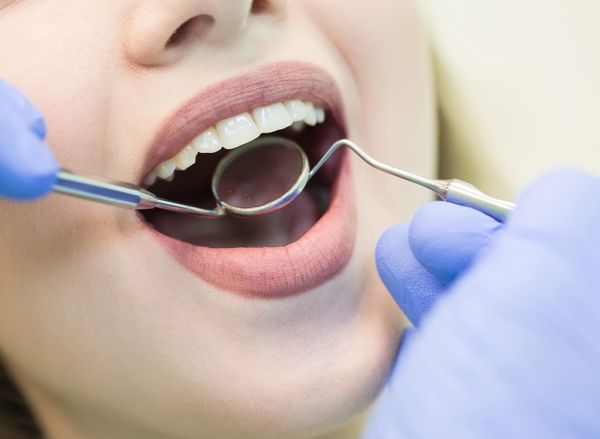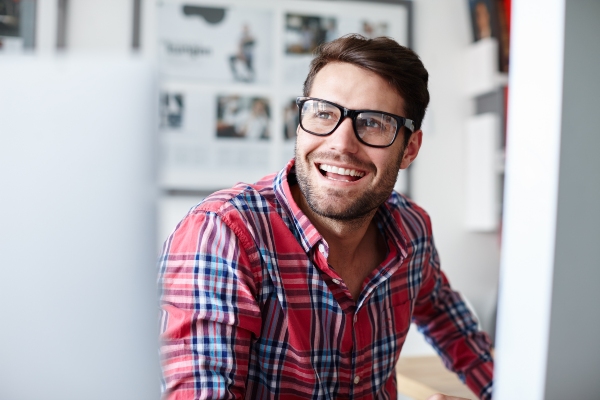Laser Dentistry Glossary

The relatively new practice of laser dentistry comes with a host of new terms that patients may not be familiar with. This comprehensive glossary provides definitions for conditions that lasers can treat, the four different types of lasers and other important items related to this type of treatment.
Conditions treated by laser dentistry
Canker sore: This is a small lesion on the inside of the mouth that is often accompanied by pain and sensitivity.
Caries: This refers to the breakdown of a tooth, more commonly known as cavities or tooth decay.
Gingivitis: This is a minor gum disease caused by poor oral hygiene and characterized by red, irritated gums.
Gum recession: This is a condition where gums shrink and reveal the roots of the teeth; this may lead to infection if bacteria are not cleaned out between the gums and teeth.
Periodontitis: This is a serious gum disease that may lead to loose teeth or even tooth loss if left untreated.
TMJD (temporomandibular joint dysfunction): This is a painful condition that can cause stiffness, clicking or locking of the jaw.
Tooth sensitivity: This may be a result of receding gums, periodontal disease or worn tooth enamel. Symptoms can include sharp pain when consuming very hot or very cold foods.
General laser dentistry terms
Abscess: Usually found on the gum line, an abscess is a painful growth caused by bacteria.
Amalgam: This is a type of metal filling commonly used to fill cavities in teeth.
Anesthesia: These are medications that numb pain and relax muscles during certain dental procedures.
Biopsy: This is a procedure in which the dentist will remove a small section of tissue to check for potential diseases or cancers.
Bridge: This is a type of replacement for missing teeth that typically contains at least two crowns.
Crown lengthening: This is a surgery where the dentist reshapes the gums to expose more of a tooth.
Dentin: This is the layer of the tooth beneath the enamel, made up of calcified tissue, cement and pulp.
Gingivoplasty: This is a surgical procedure that reshapes the gums around the teeth for a more appealing smile.
Optical coherence tomography: This is a non-invasive medical tool that allows dentists to view the inside of a tooth safely.
Pulp: This is the nerve tissue located within the tooth near the roots.
Root canal: This is a procedure that cleans the inner canal of a tooth and replaces the damaged pulp with a filling.
Sealant: This is a type of bonding agent that protects the tooth’s enamel and helps with preventing cavities.
Whitening: This is a process of removing stains from the teeth and can be sped up by using the heat of a dental laser.
Types of lasers
DIAGNOdent laser: This is a fluorescent laser that can detect early signs of tooth decay in a non-invasive manner and may be used instead of X-rays.
Hard tissue laser: This laser has a wavelength that allows it to cut through teeth and is commonly used for removing infected areas of a tooth or reshaping teeth.
Soft tissue laser: This is a type of continuous wave laser that works well when cutting into the tongue or gums and promotes quick healing of cuts during surgeries. It is an excellent option for cosmetic surgeries such as gum reshaping due to its ability to sterilize while treating the problem.
Interested in laser dentistry for yourself or your family?
Request an appointment here: https://sonorandesertdentistry.com or call Sonoran Desert Dentistry at (480) 439-0117 for an appointment in our Scottsdale office.
Recent Posts
Those wishing to change multiple aspects of their smile can benefit from dental veneers. They are an all-in-one cosmetic treatment that can address multiple aesthetic concerns. Not only can veneers fix multiple cosmetic issues in just a few dental appointments, but also they can give you a stunning new smile you are excited to show…
An Invisalign dentist offers patients a clear, step-by-step treatment plan that transforms smiles while maintaining comfort and convenience. This orthodontic option uses a series of custom aligners to gradually shift teeth into ideal positions, with progress monitored at regular intervals. Understanding the treatment process month by month helps patients prepare for each stage and stay…
Dental veneers and dental crowns are restorations that can change the appearance of your teeth. Though they are different procedures, people often confuse the two. This article will review the key differences between crowns and veneers to help you better understand which procedure is right for you.A dental veneer is a thin covering for a…
Dental veneers are ideal for fixing your tired smile. These shells can improve the appearance and structure of your teeth. But these restorations are not for everyone. The following factors indicate that dental veneers are ideal for you.Broken, cracked, or chipped teeth will need immediate restoration. Any degree of dental damage will leave the teeth…


